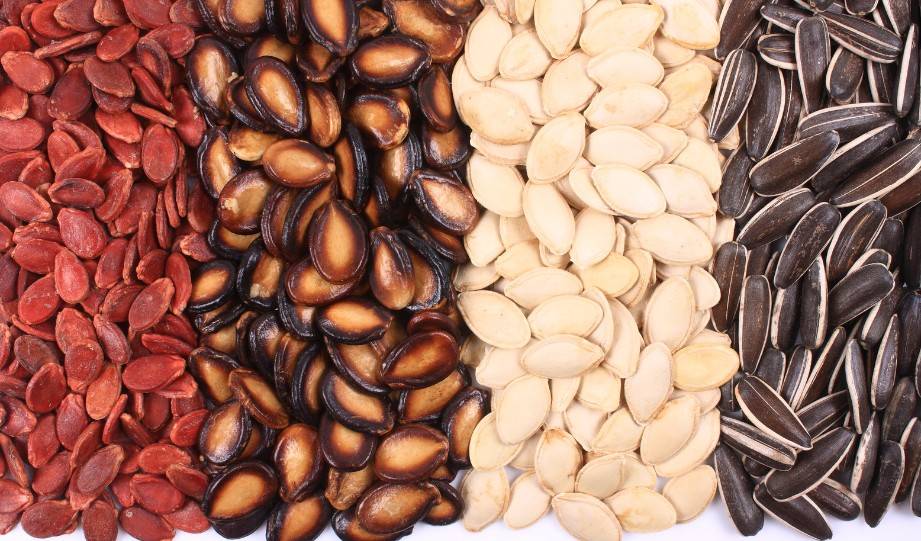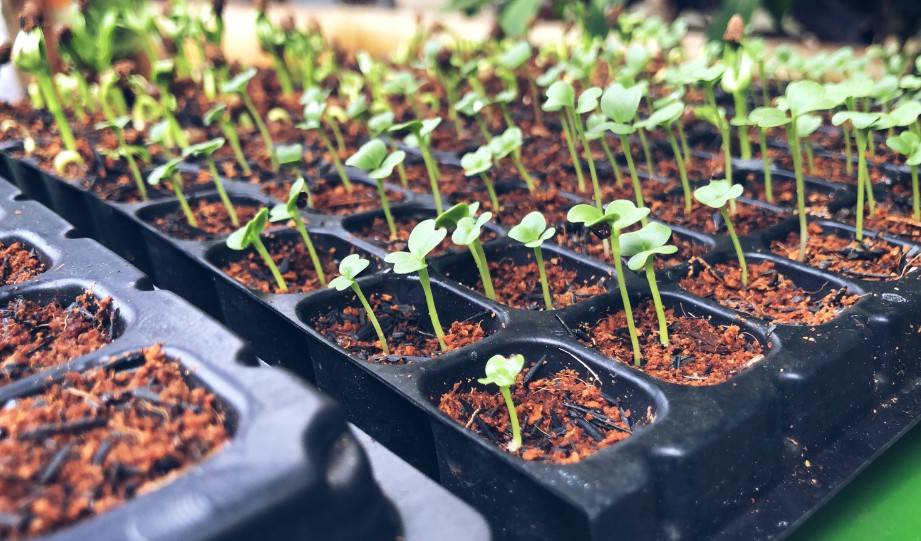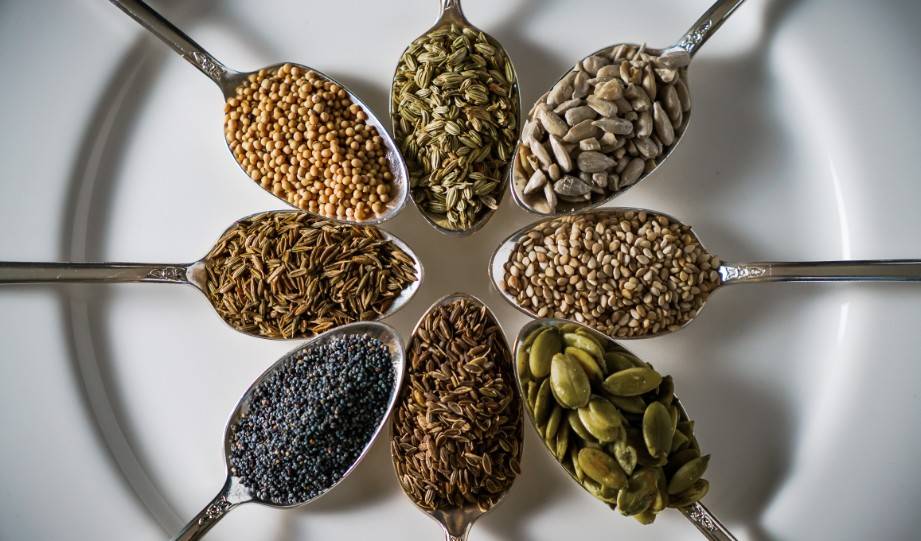If you're intrigued by the idea of fostering community spirit, promoting sustainability, and preserving the incredible diversity of plant life, starting a seed library might just be your next big project.
A seed library operates much like a traditional library, except it lends seeds instead of books. This initiative not only brings people together over gardening but also plays a crucial role in protecting heirloom varieties and supporting local food security.
Let's dive into how you can turn this green dream into reality, step by step.
What Is a Seed Library?

A seed library is a novel concept where community members can "borrow" seeds to plant in their gardens. Much like a book in a traditional library, these seeds are taken with the intention of returning something back later.
In this case, it's the seeds from the plants that have grown, ensuring the library's collection remains vibrant and continues to grow.
Unlike traditional libraries, which focus on lending books and media, seed libraries are all about cultivating a cycle of growth, sharing, and sustainability.
They serve not just as a resource for gardening enthusiasts but as a vital hub for preserving biodiversity, heirloom varieties, and fostering a sense of community through shared interests in gardening and environmental stewardship.
By participating in a seed library, you contribute to a larger movement of sustainability and environmental awareness, promoting local food security and resilience.
It's a practical yet profound way to engage with the earth and with each other, bridging the gap between generations and backgrounds through the simple act of sharing seeds.
Why Seed Libraries Matter

Seed libraries play a crucial role in preserving heirloom varieties—those time-honored plants that have been passed down through generations, often forgotten by large-scale commercial agriculture.
These varieties are not just a link to our past; they are key to diversifying our future food sources and ensuring genetic variety within plant species.
By focusing on these unique seeds, seed libraries contribute significantly to biodiversity preservation, offering resilience against pests, diseases, and changing climate conditions.
Furthermore, seed libraries are pivotal in promoting local food security. They empower communities to take control of their food sources, encouraging sustainable practices and self-reliance.
Through the act of seed sharing, communities gain access to a wide variety of plants that are well-suited to local environments, leading to more successful harvests and a reduction in food deserts.
In essence, seed libraries are more than just collections of seeds—they are repositories of history, sustainability, and community resilience. They teach us the value of sharing and conserving, ensuring that future generations have access to diverse, nutritious, and locally adapted food options.
Engaging with a seed library is a step towards a more sustainable and secure food future for everyone.
Planning Your Seed Library
Setting Clear Goals
When embarking on the journey to start a seed library, the first step is to set clear goals.
Having a well-defined mission and objectives not only guides your efforts but also inspires and attracts community members to join your cause. It's about identifying what you want your seed library to achieve beyond the simple exchange of seeds.
For example, your seed library's goals might include preserving local heirloom varieties that are at risk of disappearing, promoting organic gardening practices, enhancing local food security, or even educating the community about the importance of biodiversity.
Or perhaps you aim to create a space that fosters community engagement and connection, bringing together people of all ages with a shared interest in gardening and sustainability.
By establishing these goals upfront, you lay the groundwork for all decisions and actions going forward. It helps in planning your activities, organizing resources, and measuring your library's impact.
Clear objectives make it easier to communicate your vision, attract volunteers, and secure support from the community and potential partners.
Remember, a seed library with a purpose is more likely to flourish and make a lasting difference in your community.
Building a Team

Building a successful seed library isn't a one-person job—it requires a dedicated team. Finding and recruiting volunteers who share your passion for gardening, sustainability, and community service is crucial.
Start by reaching out within your own network: local gardening clubs, environmental organizations, schools, and community centers are excellent places to find people who might be interested in joining your cause.
Once you have volunteers, defining clear roles and responsibilities is key to a smooth operation.
Consider the diverse skills your project needs—organizing and cataloging seeds, managing the lending system, conducting workshops, and engaging with the community through marketing and outreach efforts.
Assigning specific roles helps each team member understand their contribution and ensures that all aspects of the seed library are covered.
Highlight the importance of each role in achieving the library's goals, and ensure there's a structure in place for regular communication and feedback. This not only helps in maintaining the library's operations but also fosters a sense of belonging and commitment among volunteers, making your seed library a true community effort.
Remember, a team aligned in purpose and clear in action is the backbone of any successful community project.
Gathering Resources
Sourcing Seeds

Sourcing seeds is the foundation of starting your seed library, and there are several avenues to explore for gathering your initial stock.
Begin with community donations—reach out to local gardeners and gardening clubs, who often have surplus seeds and might be thrilled to contribute to a cause that supports local biodiversity and food security.
These donations can often include a wide variety of heirloom seeds, enriching your library's collection from the start.
Local farmers and farmers' markets are another great resource. They can offer not only seeds but also valuable knowledge about species that thrive in your area.
Engaging with them can help ensure your library includes seeds well-suited to your local climate and soil conditions, promoting successful gardening endeavors within your community.
Consider also reaching out to seed companies; some may be willing to donate seeds to support your initiative, especially if they're interested in promoting biodiversity and sustainable gardening practices.
Lastly, attending seed swaps and gardening events can provide networking opportunities to further source seeds and grow your library's collection.
Material and Space Needs
For your seed library to function smoothly, paying attention to material and space needs is essential.
Proper storage is paramount to preserve the viability of seeds. You'll need airtight containers or envelopes to keep moisture and pests out, and a cool, dry place to store them.
Labeling supplies are also crucial for detailing the type of seed, its source, and planting instructions, ensuring that borrowers have all the information they need.
Organization plays a key role in the usability of your seed library. Consider setting up a cataloging system that allows for easy sorting and locating of seeds, such as by plant type or sowing season.
This could be as simple as a binder with written records or a digital database accessible to community members.
Finding a location that's accessible to your community is another critical factor. Public spaces like community centers, libraries, or schools often make ideal homes for seed libraries, offering high visibility and easy access.
Ensure the space you choose is conducive to both storing the seeds properly and hosting community members who come to browse, borrow, and contribute seeds.
Organizing and Cataloging Seeds
Best Practices for Seed Storage
Effective seed storage is necessary for the longevity and success of your seed library. Start with proper labeling—each seed packet should clearly indicate the name of the plant, variety, and the date of harvest.
This information is crucial for gardeners to make informed decisions and for tracking the seeds' viability over time.
Categorization is another important aspect. Organize seeds by plant type (vegetables, herbs, flowers) and then by variety.
This system makes it easier for members to find what they're looking for and ensures that seeds are rotated efficiently, minimizing the risk of expired seeds.
For preservation, store seeds in a cool, dry place away from direct sunlight.
Using airtight containers can help maintain optimal conditions, reducing moisture and the risk of mold. Silica gel packets can also be added to absorb any excess moisture, further protecting the seeds' viability.
Creating a Lending System
To create a lending system, start by establishing a simple, user-friendly method for tracking seed check-outs and returns. A digital database or even a well-organized ledger can serve this purpose.
Include essential information like the borrower's name, contact details, date of check-out, and expected return date, ensuring accountability and ease of follow-up.
Educate your community members on the importance of returning seeds after harvest. This not only replenishes the library's stock but also fosters a cycle of sharing and sustainability.
To encourage returns, consider hosting seed return events or workshops on how to collect seeds, making the process educational and engaging.
Moreover, clear communication about the expectations for seed returns—and why it matters—can motivate participants to contribute back to the library.
Highlighting the community benefits and the role each member plays in preserving biodiversity can inspire a sense of responsibility and community pride, ensuring the library remains a flourishing resource for everyone.
Engaging Your Community
Education and Workshops

Engaging your community is key to the success and sustainability of your seed library.
Hosting educational workshops and events is a fantastic way to spark interest, share knowledge, and strengthen community bonds.
Start with seed saving workshops that teach the basics of collecting, cleaning, and storing seeds. These workshops not only support the library's mission by encouraging seed returns but also empower individuals with the skills to become more self-reliant gardeners.
Gardening workshops can cater to all levels of experience, from beginner gardeners looking to learn the basics to advanced classes on organic gardening practices or pest management.
Seasonal gardening workshops can help members plan their gardens, while cooking classes using garden produce can celebrate the fruits of their labor.
Don't overlook the power of themed events, like "Heirloom Tomato Tasting" or "Grow Your Own Herbs," to bring people together and spark conversations around gardening and food.
Partnering with local experts, gardening clubs, and environmental organizations can enrich these events, offering diverse perspectives and deepening the community's gardening knowledge.
By making these events interactive, fun, and informative, you'll not only support your seed library's goals but also create a vibrant, engaged community of gardeners eager to learn, share, and contribute.
Marketing Your Seed Library
Marketing your seed library effectively is crucial to raising awareness and encouraging community participation.
Start with social media, a powerful tool for reaching a wide audience quickly. Create engaging posts that highlight upcoming events, feature gardening tips, and showcase the successes of your seed library, such as photos of flourishing gardens or testimonials from participants.
Local media can also be a valuable ally. Reach out to newspapers, radio stations, and local TV networks with press releases or story pitches about your seed library’s impact, special events, or unique stories.
These outlets can provide broader coverage, reaching individuals who might not be active on social media.
Don’t underestimate the power of word-of-mouth. Encourage your current members to spread the word within their own networks. Sometimes, a personal recommendation can be the most compelling reason for others to join.
Additionally, collaborate with local businesses, schools, and community centers to distribute flyers or posters and possibly host events or workshops.
Such partnerships not only broaden your reach but also strengthen community ties.
Finally, ensure your library is listed in community calendars and online directories related to gardening, sustainability, and community projects.
This makes it easier for people actively searching for related activities to find and engage with your seed library.
Measuring Success and Making Improvements
Measuring the success of your seed library is crucial for its growth and sustainability.
Start by tracking key metrics such as the number of seeds borrowed and returned, the variety of seeds in circulation, and the number of active participants.
These figures can offer concrete evidence of the library’s usage and community engagement.
Feedback from your community is another invaluable metric. Conduct surveys or hold feedback sessions to gather insights on what’s working and what could be improved.
Questions can cover topics from the accessibility of the library to suggestions for future workshops or events.
This direct line of communication not only helps you understand the community's needs but also makes members feel valued and heard, increasing their commitment to the project.
Observing changes in community behavior towards gardening and sustainability practices can also indicate success.
Are more people participating in gardening activities? Is there an increased interest in heirloom varieties or organic gardening? These qualitative measures provide a broader view of the library’s impact on local food security and biodiversity preservation.
Encouraging continuous improvement is essential. Use the data and feedback collected to refine operations, expand offerings, and enhance community engagement.
Celebrate successes with your community but also be open about challenges and how you plan to address them.
This transparent and proactive approach fosters trust and encourages ongoing participation, ensuring your seed library remains a vital and evolving community resource.
Conclusion
We've explored the journey of starting a seed library, from understanding its significance in preserving biodiversity and enhancing food security to gathering resources, organizing seeds, and engaging the community. Creating a seed library is a meaningful way to contribute to sustainability and connect with like-minded individuals.
Now, it's your turn to plant the seeds of change within your community. Begin by setting clear goals, assembling a passionate team, and reaching out for support. Remember, every great forest starts with a single seed. Why not take that first step today?
Actionable Blog Posts
How to Start a Seed Library in Your Community
Written by : Eunice Rodriguez | Published: March 28, 2024
Contents
From tiny seeds to towering trees, learn how starting a seed library can cultivate a greener, more connected community.
If you're intrigued by the idea of fostering community spirit, promoting sustainability, and preserving the incredible diversity of plant life, starting a seed library might just be your next big project.
A seed library operates much like a traditional library, except it lends seeds instead of books. This initiative not only brings people together over gardening but also plays a crucial role in protecting heirloom varieties and supporting local food security.
Let's dive into how you can turn this green dream into reality, step by step.
What Is a Seed Library?
A seed library is a novel concept where community members can "borrow" seeds to plant in their gardens. Much like a book in a traditional library, these seeds are taken with the intention of returning something back later.
In this case, it's the seeds from the plants that have grown, ensuring the library's collection remains vibrant and continues to grow.
Unlike traditional libraries, which focus on lending books and media, seed libraries are all about cultivating a cycle of growth, sharing, and sustainability.
They serve not just as a resource for gardening enthusiasts but as a vital hub for preserving biodiversity, heirloom varieties, and fostering a sense of community through shared interests in gardening and environmental stewardship.
By participating in a seed library, you contribute to a larger movement of sustainability and environmental awareness, promoting local food security and resilience.
It's a practical yet profound way to engage with the earth and with each other, bridging the gap between generations and backgrounds through the simple act of sharing seeds.
Why Seed Libraries Matter
Seed libraries play a crucial role in preserving heirloom varieties—those time-honored plants that have been passed down through generations, often forgotten by large-scale commercial agriculture.
These varieties are not just a link to our past; they are key to diversifying our future food sources and ensuring genetic variety within plant species.
By focusing on these unique seeds, seed libraries contribute significantly to biodiversity preservation, offering resilience against pests, diseases, and changing climate conditions.
Furthermore, seed libraries are pivotal in promoting local food security. They empower communities to take control of their food sources, encouraging sustainable practices and self-reliance.
Through the act of seed sharing, communities gain access to a wide variety of plants that are well-suited to local environments, leading to more successful harvests and a reduction in food deserts.
In essence, seed libraries are more than just collections of seeds—they are repositories of history, sustainability, and community resilience. They teach us the value of sharing and conserving, ensuring that future generations have access to diverse, nutritious, and locally adapted food options.
Engaging with a seed library is a step towards a more sustainable and secure food future for everyone.
Read More:
How to Create a No-Dig Vegetable Garden
Planning Your Seed Library
Setting Clear Goals
When embarking on the journey to start a seed library, the first step is to set clear goals.
Having a well-defined mission and objectives not only guides your efforts but also inspires and attracts community members to join your cause. It's about identifying what you want your seed library to achieve beyond the simple exchange of seeds.
For example, your seed library's goals might include preserving local heirloom varieties that are at risk of disappearing, promoting organic gardening practices, enhancing local food security, or even educating the community about the importance of biodiversity.
Or perhaps you aim to create a space that fosters community engagement and connection, bringing together people of all ages with a shared interest in gardening and sustainability.
By establishing these goals upfront, you lay the groundwork for all decisions and actions going forward. It helps in planning your activities, organizing resources, and measuring your library's impact.
Clear objectives make it easier to communicate your vision, attract volunteers, and secure support from the community and potential partners.
Remember, a seed library with a purpose is more likely to flourish and make a lasting difference in your community.
Building a Team
Building a successful seed library isn't a one-person job—it requires a dedicated team. Finding and recruiting volunteers who share your passion for gardening, sustainability, and community service is crucial.
Start by reaching out within your own network: local gardening clubs, environmental organizations, schools, and community centers are excellent places to find people who might be interested in joining your cause.
Once you have volunteers, defining clear roles and responsibilities is key to a smooth operation.
Consider the diverse skills your project needs—organizing and cataloging seeds, managing the lending system, conducting workshops, and engaging with the community through marketing and outreach efforts.
Assigning specific roles helps each team member understand their contribution and ensures that all aspects of the seed library are covered.
Highlight the importance of each role in achieving the library's goals, and ensure there's a structure in place for regular communication and feedback. This not only helps in maintaining the library's operations but also fosters a sense of belonging and commitment among volunteers, making your seed library a true community effort.
Remember, a team aligned in purpose and clear in action is the backbone of any successful community project.
Gathering Resources
Sourcing Seeds
Sourcing seeds is the foundation of starting your seed library, and there are several avenues to explore for gathering your initial stock.
Begin with community donations—reach out to local gardeners and gardening clubs, who often have surplus seeds and might be thrilled to contribute to a cause that supports local biodiversity and food security.
These donations can often include a wide variety of heirloom seeds, enriching your library's collection from the start.
Local farmers and farmers' markets are another great resource. They can offer not only seeds but also valuable knowledge about species that thrive in your area.
Engaging with them can help ensure your library includes seeds well-suited to your local climate and soil conditions, promoting successful gardening endeavors within your community.
Consider also reaching out to seed companies; some may be willing to donate seeds to support your initiative, especially if they're interested in promoting biodiversity and sustainable gardening practices.
Lastly, attending seed swaps and gardening events can provide networking opportunities to further source seeds and grow your library's collection.
Material and Space Needs
For your seed library to function smoothly, paying attention to material and space needs is essential.
Proper storage is paramount to preserve the viability of seeds. You'll need airtight containers or envelopes to keep moisture and pests out, and a cool, dry place to store them.
Labeling supplies are also crucial for detailing the type of seed, its source, and planting instructions, ensuring that borrowers have all the information they need.
Organization plays a key role in the usability of your seed library. Consider setting up a cataloging system that allows for easy sorting and locating of seeds, such as by plant type or sowing season.
This could be as simple as a binder with written records or a digital database accessible to community members.
Finding a location that's accessible to your community is another critical factor. Public spaces like community centers, libraries, or schools often make ideal homes for seed libraries, offering high visibility and easy access.
Ensure the space you choose is conducive to both storing the seeds properly and hosting community members who come to browse, borrow, and contribute seeds.
Read More:
10 Garden Plants That Repel Bugs Naturally
Organizing and Cataloging Seeds
Best Practices for Seed Storage
Effective seed storage is necessary for the longevity and success of your seed library. Start with proper labeling—each seed packet should clearly indicate the name of the plant, variety, and the date of harvest.
This information is crucial for gardeners to make informed decisions and for tracking the seeds' viability over time.
Categorization is another important aspect. Organize seeds by plant type (vegetables, herbs, flowers) and then by variety.
This system makes it easier for members to find what they're looking for and ensures that seeds are rotated efficiently, minimizing the risk of expired seeds.
For preservation, store seeds in a cool, dry place away from direct sunlight.
Using airtight containers can help maintain optimal conditions, reducing moisture and the risk of mold. Silica gel packets can also be added to absorb any excess moisture, further protecting the seeds' viability.
Creating a Lending System
To create a lending system, start by establishing a simple, user-friendly method for tracking seed check-outs and returns. A digital database or even a well-organized ledger can serve this purpose.
Include essential information like the borrower's name, contact details, date of check-out, and expected return date, ensuring accountability and ease of follow-up.
Educate your community members on the importance of returning seeds after harvest. This not only replenishes the library's stock but also fosters a cycle of sharing and sustainability.
To encourage returns, consider hosting seed return events or workshops on how to collect seeds, making the process educational and engaging.
Moreover, clear communication about the expectations for seed returns—and why it matters—can motivate participants to contribute back to the library.
Highlighting the community benefits and the role each member plays in preserving biodiversity can inspire a sense of responsibility and community pride, ensuring the library remains a flourishing resource for everyone.
Engaging Your Community
Education and Workshops
Engaging your community is key to the success and sustainability of your seed library.
Hosting educational workshops and events is a fantastic way to spark interest, share knowledge, and strengthen community bonds.
Start with seed saving workshops that teach the basics of collecting, cleaning, and storing seeds. These workshops not only support the library's mission by encouraging seed returns but also empower individuals with the skills to become more self-reliant gardeners.
Gardening workshops can cater to all levels of experience, from beginner gardeners looking to learn the basics to advanced classes on organic gardening practices or pest management.
Seasonal gardening workshops can help members plan their gardens, while cooking classes using garden produce can celebrate the fruits of their labor.
Don't overlook the power of themed events, like "Heirloom Tomato Tasting" or "Grow Your Own Herbs," to bring people together and spark conversations around gardening and food.
Partnering with local experts, gardening clubs, and environmental organizations can enrich these events, offering diverse perspectives and deepening the community's gardening knowledge.
By making these events interactive, fun, and informative, you'll not only support your seed library's goals but also create a vibrant, engaged community of gardeners eager to learn, share, and contribute.
Marketing Your Seed Library
Marketing your seed library effectively is crucial to raising awareness and encouraging community participation.
Start with social media, a powerful tool for reaching a wide audience quickly. Create engaging posts that highlight upcoming events, feature gardening tips, and showcase the successes of your seed library, such as photos of flourishing gardens or testimonials from participants.
Local media can also be a valuable ally. Reach out to newspapers, radio stations, and local TV networks with press releases or story pitches about your seed library’s impact, special events, or unique stories.
These outlets can provide broader coverage, reaching individuals who might not be active on social media.
Don’t underestimate the power of word-of-mouth. Encourage your current members to spread the word within their own networks. Sometimes, a personal recommendation can be the most compelling reason for others to join.
Additionally, collaborate with local businesses, schools, and community centers to distribute flyers or posters and possibly host events or workshops.
Such partnerships not only broaden your reach but also strengthen community ties.
Finally, ensure your library is listed in community calendars and online directories related to gardening, sustainability, and community projects.
This makes it easier for people actively searching for related activities to find and engage with your seed library.
Measuring Success and Making Improvements
Measuring the success of your seed library is crucial for its growth and sustainability.
Start by tracking key metrics such as the number of seeds borrowed and returned, the variety of seeds in circulation, and the number of active participants.
These figures can offer concrete evidence of the library’s usage and community engagement.
Feedback from your community is another invaluable metric. Conduct surveys or hold feedback sessions to gather insights on what’s working and what could be improved.
Questions can cover topics from the accessibility of the library to suggestions for future workshops or events.
This direct line of communication not only helps you understand the community's needs but also makes members feel valued and heard, increasing their commitment to the project.
Observing changes in community behavior towards gardening and sustainability practices can also indicate success.
Are more people participating in gardening activities? Is there an increased interest in heirloom varieties or organic gardening? These qualitative measures provide a broader view of the library’s impact on local food security and biodiversity preservation.
Encouraging continuous improvement is essential. Use the data and feedback collected to refine operations, expand offerings, and enhance community engagement.
Celebrate successes with your community but also be open about challenges and how you plan to address them.
This transparent and proactive approach fosters trust and encourages ongoing participation, ensuring your seed library remains a vital and evolving community resource.
Read More:
Natural Pesticides For Your Garden: Homemade & Effective
Conclusion
We've explored the journey of starting a seed library, from understanding its significance in preserving biodiversity and enhancing food security to gathering resources, organizing seeds, and engaging the community. Creating a seed library is a meaningful way to contribute to sustainability and connect with like-minded individuals.
Now, it's your turn to plant the seeds of change within your community. Begin by setting clear goals, assembling a passionate team, and reaching out for support. Remember, every great forest starts with a single seed. Why not take that first step today?
Eunice Rodriguez
Eunice is a sustainability writer whose passion is sharing accessible eco-friendly practices with GreenCitizen's global readership. She enjoys birdwatching during her downtime, often deriving inspiration from nature's resilience. An enthusiastic cyclist, she is also an ardent advocate of eco-friendly transport.
Quick Links
Green Living Guides
Green Jobs
Inspiring Green News
Green Directory
Green Store
Electronics Recycling
Category: Actionable Blog Posts, Gardening, Sustainable Living